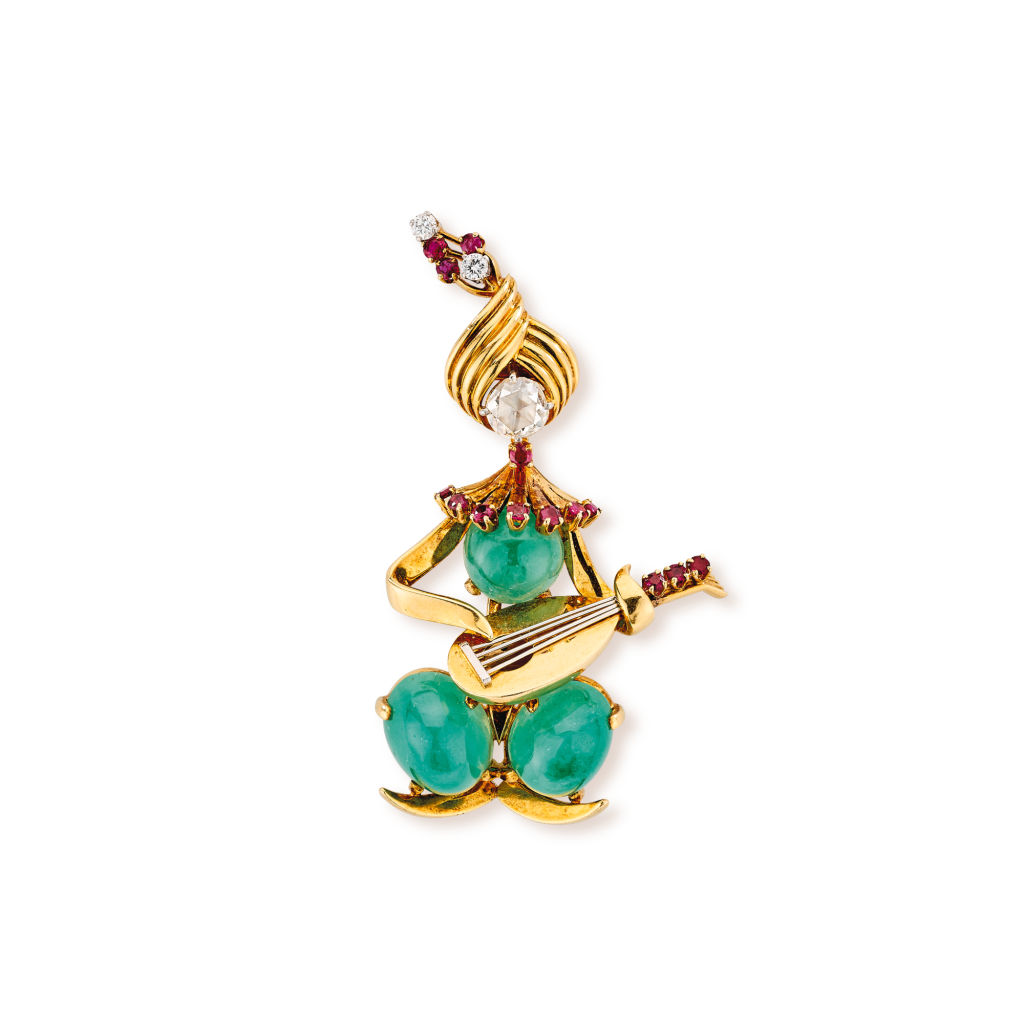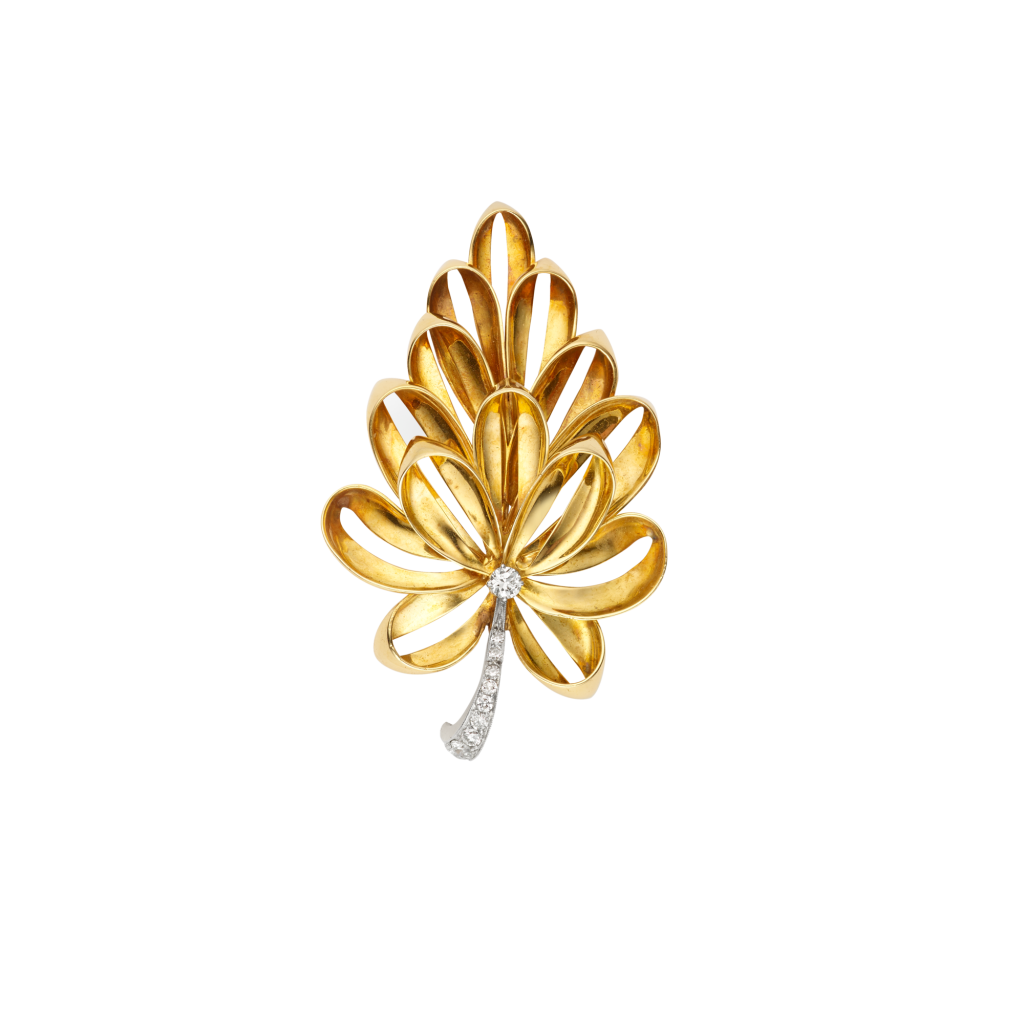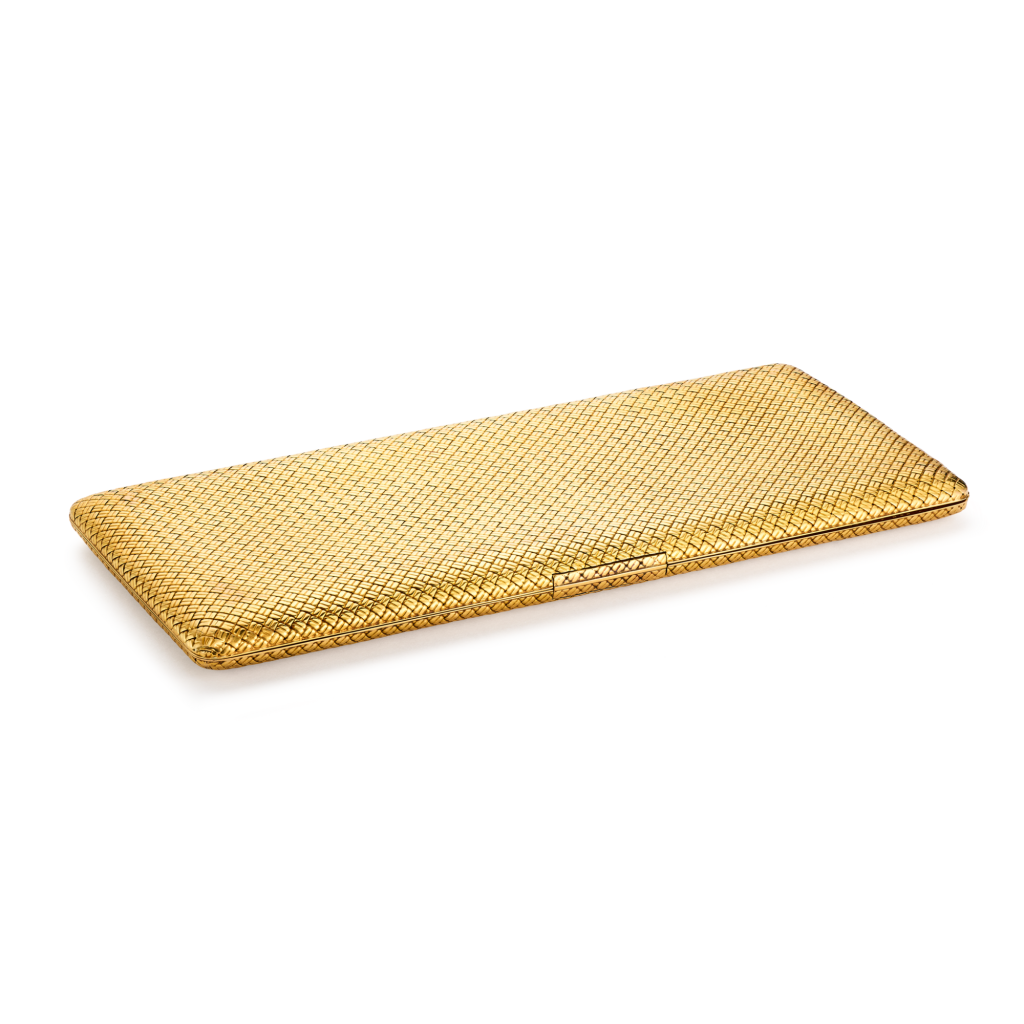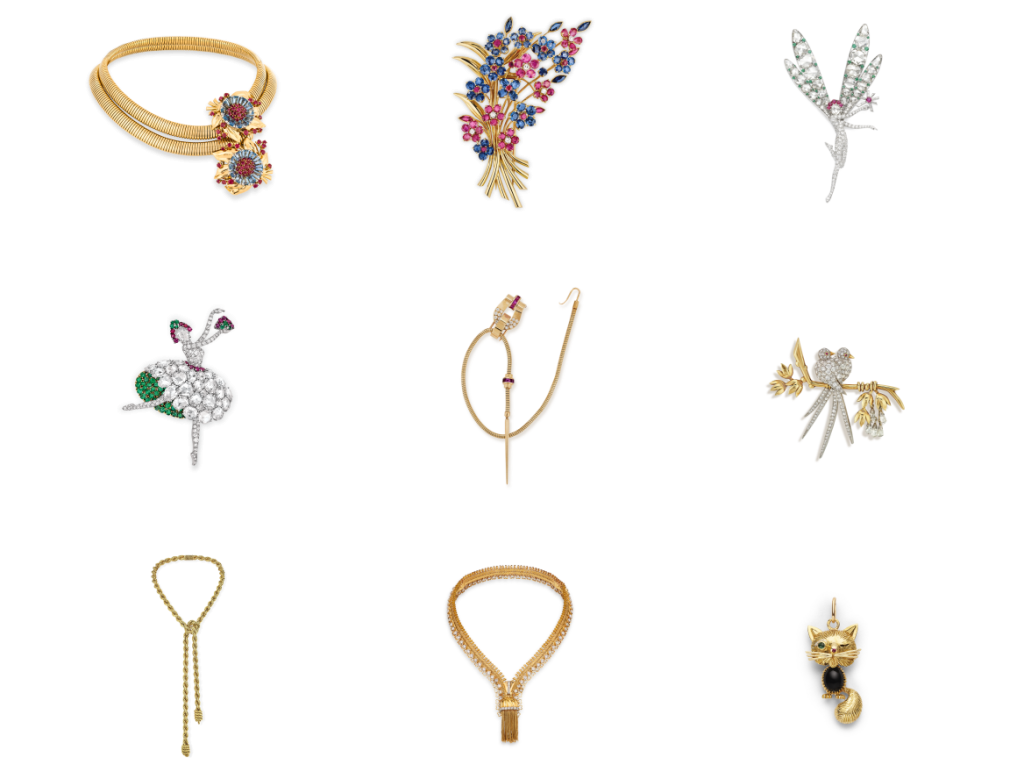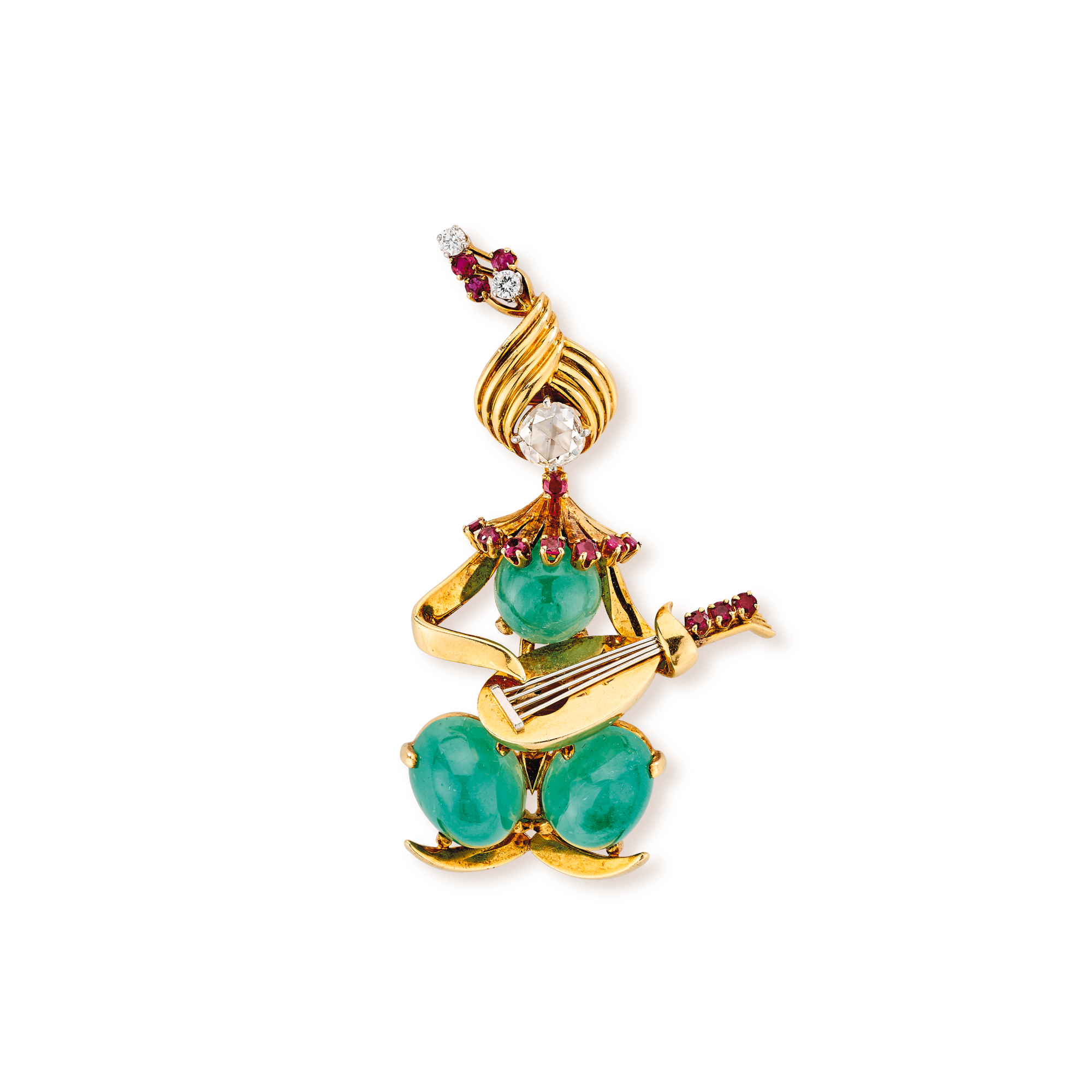
Rajah clip
Creation details
- Creation year 1947
- Stone Diamond
- Stone Emerald
- Stone Ruby
- Material Gold
- Usage Clip
- Dimensions 58 × 32 mm
The Rajah clip dating from 1947 shows the development of figurative depictions within the Maison’s work, particularly during the 1940s. Its portrayal of an Indian lute player illustrates the taste for distant lands, dear to the Maison since the 1920s. Particular care was given to the gold work here, with the player’s arms made of highly polished yellow gold, suggesting flexibility and movement, and his turban composed of yellow gold gadroons. Both his small collar and his turban end in rubies and diamonds, as does the handle of his lute. The rajah’s face consists of an antique-cut diamond, while three sizeable emerald cabochons, 18.55 carats each, form his body and legs. The use of stones cut in this way pays tribute to India, an important country that has historically played a central role in the gemstone market. While Van Cleef & Arpels’ taste for foreign lands included far-flung geographical areas in the 1920s, including different Far Eastern cultures, it was recentered on India during the 1940s. In fact, the trips made there by the Arpels brothers from the end of the decade initiated a series of jewelry inspired by Indian culture.
To go deeper
